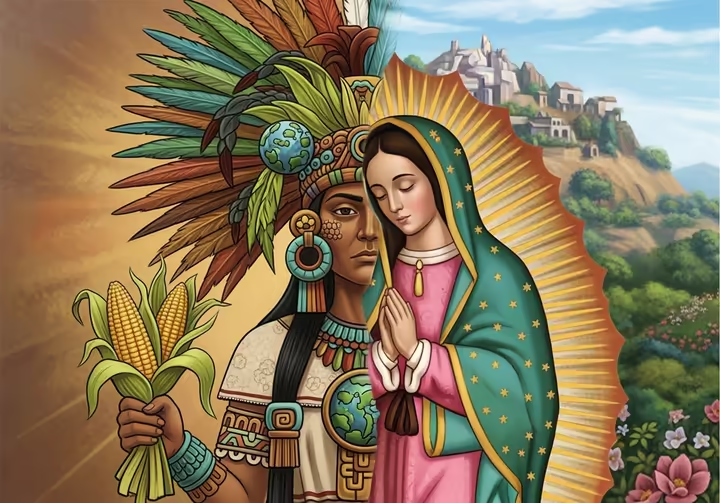A Guide to the Aztec Gods
The pantheon of Aztec gods was huge. But it wasn't a messy mob of deities. Their universe ran on a power called teotl , a force in everything from storms to people. The Aztec gods were just different faces of this one energy, each with a job. For more about their beliefs and rituals, see the Aztec Religion page.
The Big Idea Behind the Aztec Gods
Before we get to the individual Aztec gods, you have to get your head around teotl . It wasn't a person, like the Western idea of "God." Think of it more like a life force that flowed through the entire universe, constantly creating and re-creating itself.
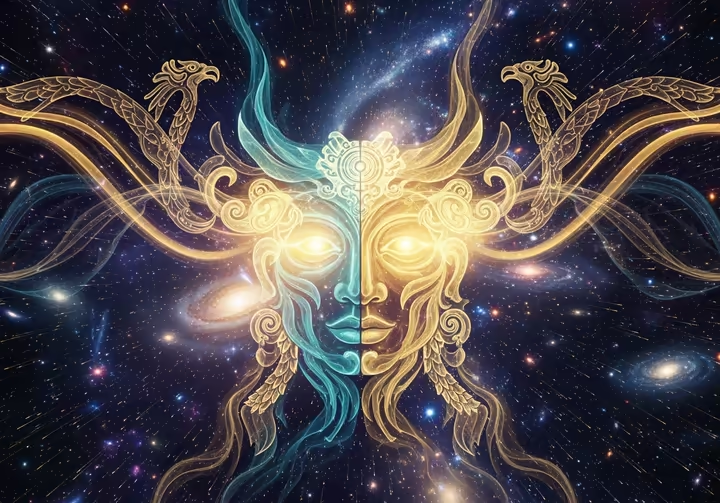
The engine that made teotl work was duality, a constant tug-of-war between matched opposites. Life and death, light and dark, order and chaos, this cosmic struggle kept everything in balance. This idea was personified by the top-dog creator god, Ometeotl , or "Two-God."
Ometeotl was both male (Ometecuhtli) and female (Omecihuatl), living in the highest heaven. All other Aztec gods flowed out from this original being. So priests thought about one big power, but regular folks worshipped many individual Aztec gods.
The A-Listers: Meet the Major Aztec Gods
The Aztec gods were not a disorganized mob, they were grouped by their jobs. You had creator gods, farm gods who kept everyone fed, and war gods who helped the empire grow. Here are the most important Aztec gods you need to know.
Huitzilopochtli, The War God
Huitzilopochtli was the Aztecs’ main guy, their patron god of the sun and war. His name means "Hummingbird on the Left," as the Aztecs believed fallen warriors were reborn as hummingbirds. This Aztec god told the Mexica people where to build their capital, Tenochtitlan.
His origin story is pure drama. His mother, Coatlicue, got pregnant from a ball of feathers. Her other kids, the moon and stars, got mad and tried to kill her. Just as they attacked, Huitzilopochtli burst from the womb fully armed and killed his siblings.
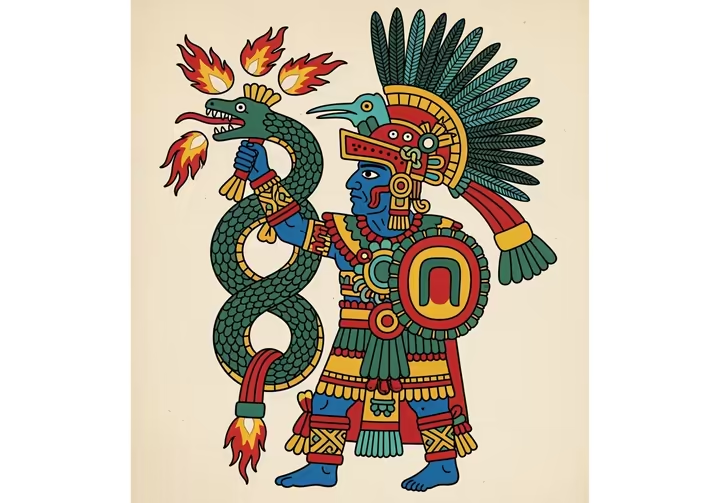
Quetzalcoatl, The Feathered Serpent
Quetzalcoatl, the "Feathered Serpent," is one of the most famous Aztec gods. His name combines the quetzal bird (sky) and coatl (serpent, for earth). Among the Aztec gods, he was a Jack-of-all-trades, a god of wind, wisdom, and art.
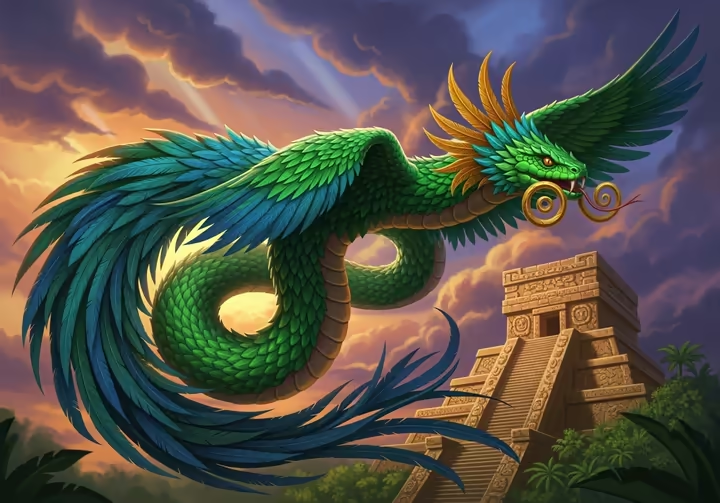
He and his rival brother, Tezcatlipoca, turned into giant snakes and ripped a sea monster in half to create the earth and sky. His biggest claim to fame was creating the humans of our time by sprinkling his blood on the bones of a previous generation.
Tezcatlipoca, The Smoking Mirror
If Quetzalcoatl was about order, his brother Tezcatlipoca was all about chaos. His name means "Smoking Mirror," after the magic obsidian mirror he used to spy on people. This Aztec god was a trickster, a master of disguise, and the god of the night sky and jaguars.
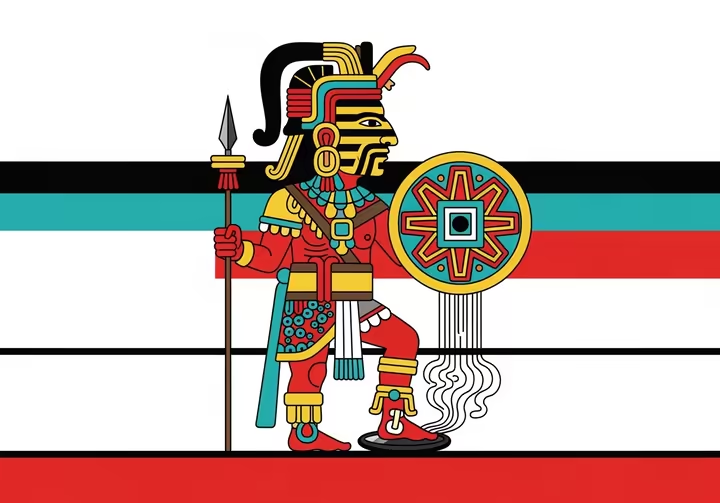
He was also a creator god, but his rivalry with Quetzalcoatl defined the different ages of the world. One of his key features is a missing foot, which he lost while using it as bait to lure a monster.
Tlaloc, The Rain God
Tlaloc was the go-to Aztec god for rain, lightning, and fertility, making him a big deal in a farming society. He could send gentle rains for crops or destructive floods and droughts. His shrine shared the top of the Templo Mayor right next to Huitzilopochtli's.
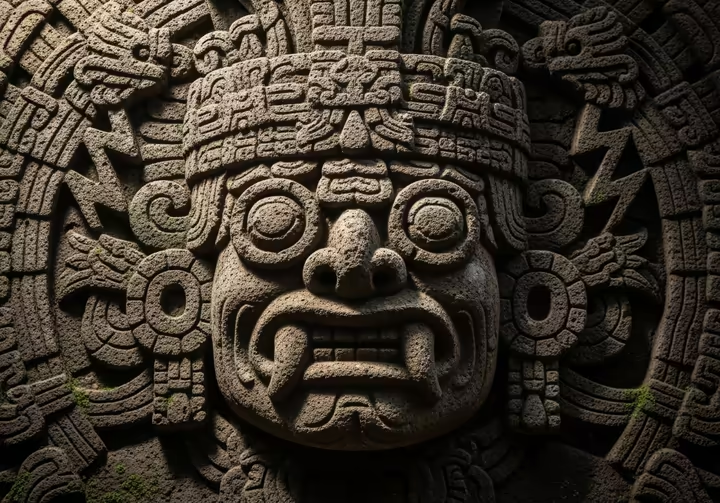
He has a distinct look, goggle-like eyes and big jaguar fangs. He lived on mountaintops and had dwarf-like helpers who held jars of rain, drought, frost, and disease.
Coatlicue, The Serpent Skirt
Coatlicue, "She of the Serpent Skirt," was the earth mother goddess in the pantheon of Aztec gods. She gave birth to all life and also consumed the dead. She's most famous as the mother of Huitzilopochtli, the moon, and the stars.

Her most famous statue is a total stunner. Her head is two serpent heads meeting in the middle, symbolizing blood. She wears a necklace of human hands and hearts, and her skirt is a writhing mass of snakes.
Xipe Totec, Our Lord the Flayed One
Yeah, his name is as grim as it sounds. Xipe Totec was the Aztec god of spring, farming, and rebirth. He flayed himself to provide food for humanity, symbolizing a corn kernel shedding its outer layer to sprout.
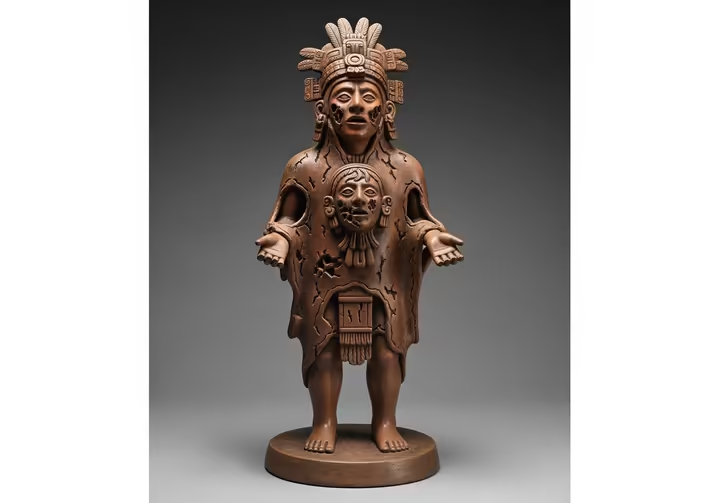
In art, he's shown wearing the flayed skin of a human victim. For the Aztecs, his gruesome rituals showed that death was necessary for new life.
The Cosmic Map of the Aztec Gods
The Aztec universe was a tidy place. The world was a flat disk divided into four directions, each with its own color and a ruling Aztec god. For a deeper look at how the Aztecs organized time and the cosmos, see the Aztec Calendar.
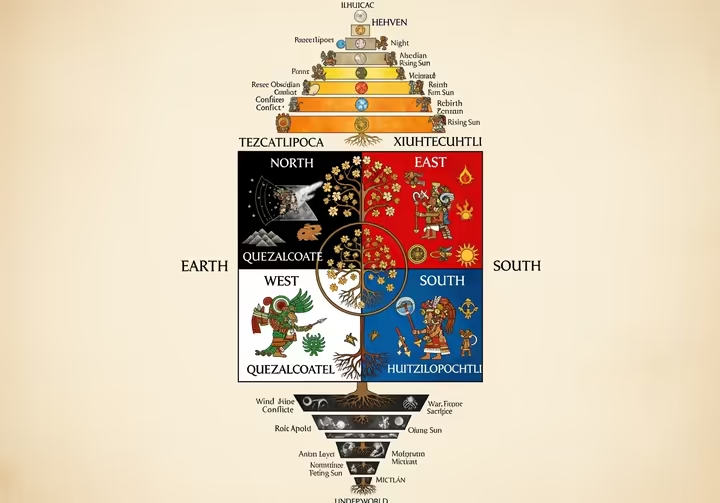
The East was red, the North black, the West white, and the South blue. Connecting it all was a vertical axis running from 13 heavens, through our world, and down into 9 underworlds.
Keeping the Aztec Gods Happy
Rituals for the Aztec Gods
The relationship with the Aztec gods was a two-way street. These Aztec gods had sacrificed themselves to create the world, so humans had a sacred debt to pay them back. This "debt-payment" was the reason for all the rituals.
Human life, especially the heart and blood, was "precious water," the ultimate fuel for the Aztec gods. Without it, the Aztecs believed the sun wouldn't rise and the universe would end.
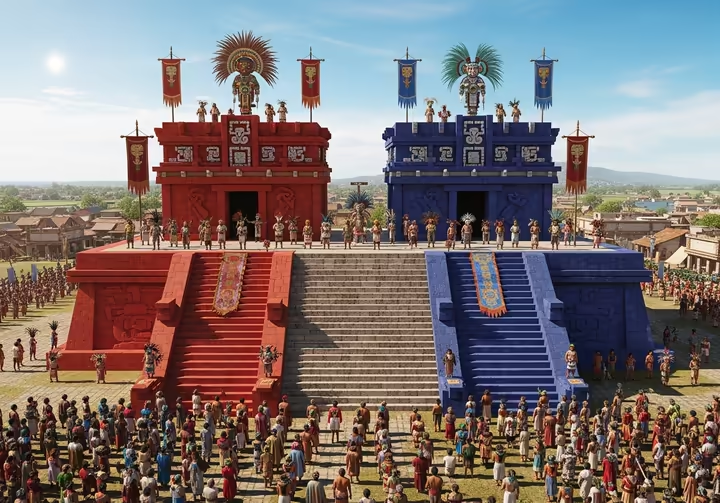
Different Aztec gods wanted different things. Huitzilopochtli needed hearts to stay strong. These public ceremonies fulfilled a sacred duty and showed everyone who was in charge.
Did the Aztec Gods Disappear?
When the Spanish arrived in 1519, they tried to erase the religion of the Aztec gods. They smashed idols, burned books, and built churches on top of Aztec temples.
But the old ways didn't just vanish, they blended with Catholicism. Old festivals were matched with Catholic holidays, and old Aztec gods found new faces. The best example is the Virgin of Guadalupe, Mexico's patron saint.
She appeared on Tepeyac Hill, a spot sacred to the Aztec mother goddess Tonantzin ("Our Sacred Mother"). This let people continue devotion to a divine mother, blending Tonantzin with Mary. The old Aztec gods never really died, they just changed form.
